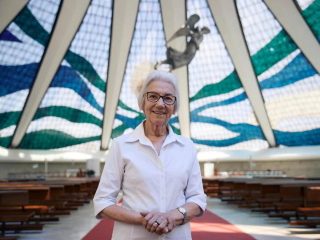Myanmar. Elections 2020. Hope for change?
Later this year, Myanmar is scheduled to hold its third general election in six decades in a landmark development for the country’s democratic transition.
While details remain unclear amid the global coronavirus pandemic, as of now the Southeast Asian state is set to hold its expected polls as the ruling party faces manifold challenges that could pose significant risks for the future trajectory of reform and freedom.While Myanmar had been under the rule of the military, known as the Tatmadaw, for a half-century, an opening in the 2010s saw subsequent political inroads made that turned the country into a rare story of hope for democracy and freedom in Southeast Asia. The changes culminated in the assumption of power by the long-time opposition National League for Democracy (NLD), led by democracy icon Aung San Suu Kyi, following a landslide win in free national elections held in November 2015.
Nearly five years on, while Suu Kyi and the NLD have undertaken reforms in some areas, they have not lived up to the high expectations that existed when they took office. Politically, at home, Suu Kyi’s relationship with ethnic groups has worsened over the years as hopes for national reconciliation and decentralization have dimmed, and her ties with the military – which continues to exercise significant independent influence – remain strained. Abroad, though Myanmar has reinforced its foreign alignments, the balance of those alignments continues to be hampered by the legacy of the Rohingya crisis, which soured ties with some Western countries including the United States and reinforced Myanmar’s continued dependence on China.
Security-wise, the country’s ongoing ethnic conflicts, which have plagued it since independence in 1948, earning the title of the world’s longest-running civil war, have shown few signs of abating. Despite initial hopes for peace and talk of a temporary ceasefire amid COVID-19, a series of structural challenges – including lingering civil-military tensions, fierce divisions among its various ethnic groups, and the influence of insurgent groups, including the new Arakan Rohingya Salvation Army (ARSA) – suggest that there is little chance of things truly changing for the better until the dust settles after 2020 polls.
Economically, while the NLD has made some efforts to encourage businesses, this has largely been an area of missed opportunity. Major issues remain in areas such as jobs, infrastructure, and foreign investment, in part exacerbated by the aforementioned stalled efforts at national reconciliation. Though Myanmar itself has thus far not been majorly affected by COVID-19 relative to the rest of Southeast Asia, the virus has nonetheless further dimmed economic prospects in the near term, with the NLD as of now set to enter into the 2020 elections with the lowest growth rates since the country’s opening began.
The confluence of these political, security, and economic challenges reinforce the reality that the NLD will enter into 2020 elections amid a much more sombre atmosphere than the hope displayed in the historic 2015 polls that brought it to power. The NLD is facing waning support in certain ethnic and urban areas of the country. More broadly, even though the elections could help consolidate the country’s fragile electoral democracy, these underlying challenges have also heightened anxieties about polls themselves, including whether or not they will be held on time, will proceed in a free and fair manner, and will be held peacefully in the country, especially in conflict-ridden areas.
To be sure, despite these challenges, it is far from doom and gloom for the NLD heading into polls expected later this year. While the ruling party has had a rocky road during its term in office and has at times admitted as much, for now, the fact is that the 2020 elections still remain the NLD’s to lose, with Suu Kyi herself continuing to retain significant popularity in most of Myanmar and little appetite for the military to return to power. It is also important to keep in mind that the focus on COVID-19 can cut both ways: It can exacerbate the NLD’s governance challenges, but it can also reinforce the case for continuity and political stability and take the focus away from the party’s own problems, thereby cementing its expected return to power.
Even so, the realization of an expected NLD election win, albeit one smaller than the landslide that the party had recorded back in 2015, will not change the sobering reality of the NLD’s tough road ahead and the prospects for Myanmar’s democracy and reform moving forward. While a second term for the NLD would keep the prospects for reform intact, the dizzying array of issues it will have to deal with – from constitutional reform to managing ethnic conflict – remains daunting. And as the years progress, other variables, including discontent among smaller ethnic parties, maneuvering by elements within the military to maintain or even increase their political influence, and the NLD’s succession dynamics beyond Suu Kyi herself, mean that the ruling party’s continued ability to govern Myanmar may be far from assured.
This is not to say that Myanmar’s upcoming polls are unimportant: indeed, if and when they are held and whatever their limits, competitive elections will be a landmark development in helping consolidate fragile electoral democracy in the Southeast Asian state. But a broader, future-oriented perspective must be kept in mind even as the focus is on the dynamics and then the results of Myanmar’s upcoming elections in the coming months. Otherwise, the window of hope for change in the country that we saw open in the early 2010s could soon begin closing and the country’s trajectory could take a turn for the worse.
Prashanth Parameswaran
Southeast Asia Analyst



